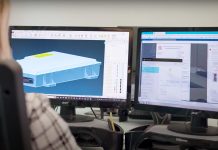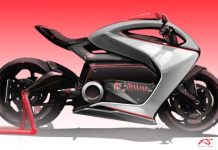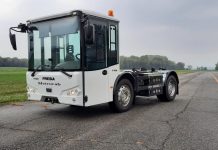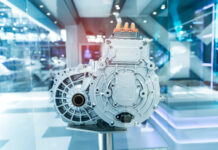Electric Motors Talks go on and arouse lively interest, as joint initiative by University of L’Aquila and by Coiltech to promote an exchange of know-how among Coil Winding specialists and related fields. The protagonist of the third meeting, particularly detailed and rich in speeches along the whole day, was Design of electric motors for automotive applications. «The market of electric vehicles is growing, a dynamic context that today makes finding innovative technologies and new materials fundamental to design more and more performing electric motors» stated Prof. Marco Villani, professor at University of L’Aquila and technical director of Electric Motor Engineering.
As usual, speakers intervened with high competence, providing added value with their expertise of international scope, succeeding in transmitting with great incisiveness the innovation in design ambit and interesting ideas for an increasingly dynamic and forefront sector research and development.
The first speech was delivered by the French engineer Nicolas Riviere from the British company Motor Design Ltd, focusing on the Optimised Electrical Machine Design for E-Mobility Applications. «The e-machine design trends and challenges are higher efficiency, increased torque and power density, reduced costs, increasing volumes and mass production, enhanced integration and shorter development cycles». He explained that the design optimization for the electric motor is a complex, multidisciplinary and often non-linear problem, since it involves multi-objectives, multi-constraint scenarios, and he explained the combination of motor-CAD and optiSLang, unprecedented optimization strategy in both academic literature and industry.
Afterwards, the Italian engineer Andrea Credo, from University of L´Aquila, explained in detail the High-speed Synchronous Reluctance motor for electric vehicles, with a deep insight in Pure Synchronous Reluctance Motor. «The SynRel could be a valid alternative for electric and hybrid vehicles due to its simple and rugged construction. It has been selected as Rare Earth Free motor solution for the next-gen of electric powertrains». The highlights underlined by the engineer Credo include very low losses in the rotor also at high-speeds, fewer requirements for cooling, low inertia and mass simple manufacturing. «The use of radial ribs along the q-axis allows improving the strength of the structure and assuring the rotor integrity at higher speeds».
The company Braitec, Ansys Partner, participated with the attendance of its Senior Application Engineer Pedram Nasab, relying on a doctorate in multi-physical analysis of electromagnetic systems.
In his speech “Application of Computer Aided Engineering in Designing the Electric Motors for Automotive” he explained the advantages of virtual design and the best practice for virtual product development, especially about electric machines for automotive. «It is possible to exploit the potentialities of Ansys simulation software to analyse not only single components but the whole system in its complexity, integrating the data of the different physics to obtain fast, accurate and precise responses that take the interactions of electrical, magnetic, thermal and mechanical aspects into account ».
The engineer Mario Kuschnerus, Technical Sales Manager from the company Elantas explained instead how to select the right Insulation Material related to Motor Design and Application Technique for automotive market. In his speech, he showed Elantas materials used in motors, to achieve the best insulations of the system, such as impregnating resins, impregnating varnishes, finishing varnishes, electrically insulating film, casting & potting resins and wire enamels.
«The company Elantas provides the full range of chemistries for all common insulation fields. Our comprehensive product portfolio is based on a high technological level and a consistent customer and service orientation. We offer our customers always the best technical solution.
In ambit of application techniques, it is necessary to make a comparison of main techniques. Potting has 99,999% fill rate, Trickling & Roll dip with ~95% fill rate, Hot Dip (UV) with ~97% fill rate and VPI, Vacuum Pressure Impregnation with ~99% fill rate.
Magnetic Materials 09/06/2021 10.30-12.00
Manufacturing of Electric Motors for the Automotive Industry 23/06/2021 10.30-12.00
Insulating Materials 07/07/2021 10.30-12.00
The scientist Hullmann detailed then the skin effect in permanent magnets: «The eddy current in the permanent magnet always follows the path with the lowest effective impedance. Therefore, the part of the ohmic resistance in the impedance must be as big as the effective reactance.
High power density electric motors for e-Auxiliary applications were instead the theme of the speech by Marco Santececca, Sr. Electric Motor Design Engineer of CPM – Compact Power Motion, German company that supports the electric mobility sector by proposing solutions with innovative high-power mechatronic technologies, from concept to mass-production. The focus concerned e-auxiliary in “hybrid” commercial vehicles on applications with rated power > 1kW. It emerged that such e-auxiliaries are playing an important role in both hybrid vehicles of today and in full-electric vehicles of tomorrow.
«Most of the e-auxiliary drives are going to survive the process of complete electrification that will involve any kind of private and commercial vehicle in the next 20 years. An example is given by Fuel-Cell Electric Vehicles». The expert explained that, besides the main propulsion system, the electrification of commercial vehicles is affecting a vast panorama of auxiliary systems, like pumps, compressors and blowers. «Modularity and scalability are key factors and compactness plays a crucial role as well. Thus, an important characteristic is given by the smart and effective integration between the electric motor, HW electronics and the cooling system».
The last speech involved the participation of Piacenza company Spin, which works at the design, study and implementation of electromagnetic devices, of mechanical parts and of electric motors in various application sectors such as automotive, aerospace, electromedical, energy, plant engineering, home appliance and defence, without forgetting the industrial prototyping, too. Speeches were by the Electrical Engineers Matteo Betti and Claudia Di Lodovico, female presence in the webinar, young highly competent and empathic engineer woman.
The focus of the dynamic and innovative Spin was on the vibroacoustic aspects of an Axial Flux PM Motor for E-mobility. The general aspects of axial flux motor are high power density, better ventilation and cooling, good planar airgap fit for different applications. It is also ideal to design modular motors for different power and torque requirements and it has output power proportional to the square of the outer diameter. Claudia Di Lodovico provided a very useful idea about the axial flux motor electromagnetic performance: «After having preliminarily designed the electrical machine, before realizing the prototype and in order to save time, money and materials, it is good practice to conduct some electromagnetic finite element analyses to check the motor performance and its electrical parameters».
(by Lara Morandotti)









